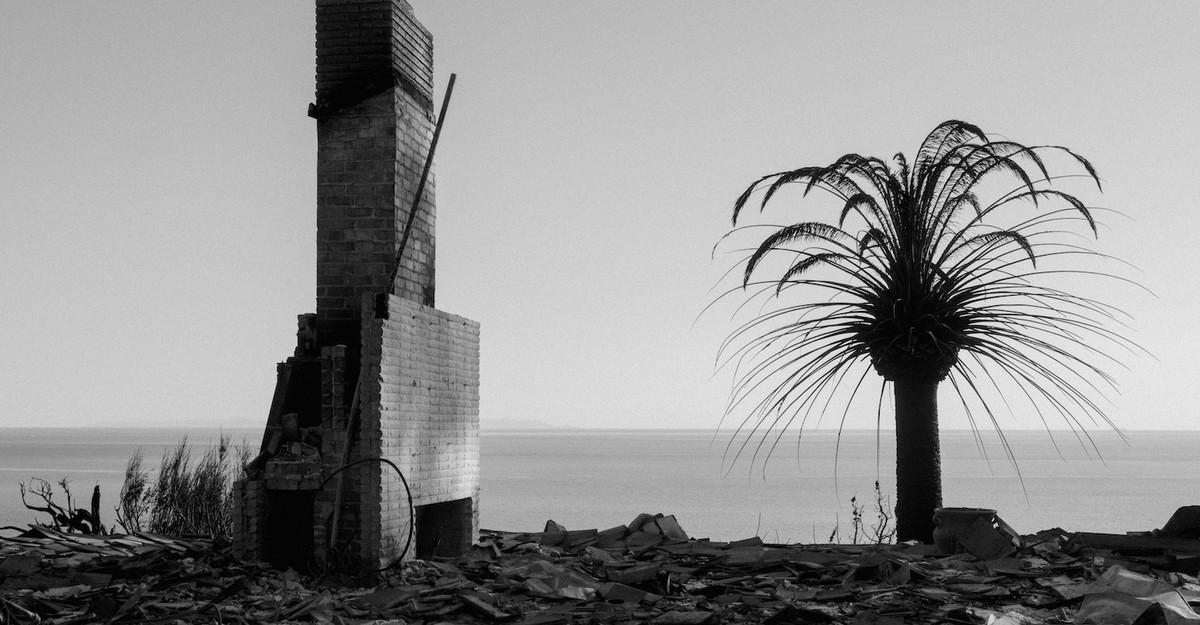L.A.’s Ashen Veil: Understanding the Implications of Wildfires
As Los Angeles faces yet another wave of devastating wildfires, the city finds itself shrouded in a thick layer of ash. This phenomenon not only darkens the skies but also raises pressing questions about environmental resilience and urban planning. With the increasing frequency and intensity of these disasters, experts warn that the future of urban life and policy in California may be fundamentally altered. What does this mean for residents, policymakers, and the environment? In this article, we delve into the implications of L.A.’s ashen veil, exploring the underlying causes of wildfires, their impact on the community, and the urgent need for strategic planning.
The Reality of Wildfires in Los Angeles
Los Angeles has long been accustomed to its warm, dry climate, but the wildfires that have become commonplace in recent years are not merely an unfortunate occurrence; they are a symptom of a larger problem. The factors contributing to these wildfires are complex and multifaceted:
- Climate Change: Rising temperatures and prolonged droughts have created an environment ripe for wildfires. The Intergovernmental Panel on Climate Change (IPCC) emphasizes that climate change is intensifying the frequency and severity of extreme weather events, including wildfires.
- Urban Expansion: As L.A. continues to grow, more homes and businesses are built in areas previously considered wildland. This encroachment not only increases the risk of wildfires but also complicates firefighting efforts.
- Invasive Species: Non-native plants, such as cheatgrass, are more flammable than native vegetation, contributing to the rapid spread of wildfires.
The Ashen Veil: A Symbol of Change
The aftermath of these fires leaves a literal and metaphorical ash veil over the city. For residents, this ash serves as a constant reminder of the dangers lurking in their environment. The visible impact of the wildfires extends beyond aesthetics; it affects health, economy, and social dynamics.
Health experts warn that inhaling ash can lead to respiratory issues, particularly for vulnerable populations such as children and the elderly. The California Air Resources Board has reported spikes in particulate matter during wildfire events, which can exacerbate pre-existing health conditions.
Economic Implications
The economic ramifications of wildfires are profound. Businesses in affected areas face closures, and tourism—an essential aspect of L.A.’s economy—can suffer due to air quality concerns and the fear of future fires. Additionally, the costs associated with firefighting efforts and recovery can strain local and state budgets.
- Insurance Rates: Homeowners in wildfire-prone areas may face skyrocketing insurance premiums or even find it challenging to obtain coverage altogether.
- Property Values: Areas that have been significantly affected by wildfires may see a decrease in property values, impacting the wealth of residents.
Urban Planning: A New Paradigm
In light of these challenges, urban planners and policymakers are beginning to rethink how cities like Los Angeles are designed and managed. The concept of “fire-resilient communities” is gaining traction, emphasizing the importance of integrating fire safety into urban planning.
Strategies for Fire-Resilient Communities
To combat the growing threat of wildfires, experts suggest several proactive strategies:
- Creating Defensible Space: Homeowners are encouraged to maintain defensible space around their properties by clearing flammable vegetation and using fire-resistant landscaping.
- Implementing Zoning Changes: Zoning laws can be adjusted to restrict building in high-risk areas, ensuring that new developments are safer and more resilient.
- Investing in Infrastructure: Improving water supply systems and access roads can enhance firefighting capabilities and emergency response times.
Community Engagement and Education
Building fire-resilient communities also involves engaging residents in prevention efforts. Education campaigns can empower individuals with the knowledge they need to protect their homes and families. Programs that promote community preparedness, such as evacuation plans and emergency kits, are essential.
The Role of Technology in Fire Management
Technology plays a crucial role in modern wildfire management. Innovations such as satellite imaging, drones, and artificial intelligence are transforming how we detect and respond to wildfires:
- Early Detection: Satellite technology can identify hotspots and monitor vegetation dryness, allowing for quicker response times.
- Drones: Equipped with cameras and sensors, drones can provide real-time data on fire behavior and help assess damage.
- Predictive Modeling: Advanced algorithms can analyze weather patterns and vegetation data to predict fire risks more accurately.
Looking Towards a Sustainable Future
While the challenges posed by wildfires are daunting, they also present an opportunity for Los Angeles to reimagine its future. By prioritizing sustainability and resilience, the city can lead the way in innovative urban planning and community engagement.
Moreover, it is vital to acknowledge that the fight against wildfires is not solely a local issue; it requires collective action at state and federal levels. Policies addressing climate change, land management, and community development can significantly mitigate the risks associated with wildfires.
A Call to Action
As Los Angeles grapples with the reality of its ashen veil, it is clear that the city stands at a crossroads. The decisions made today will shape the future of urban life in California. Residents, policymakers, and experts must collaborate to create strategies that not only address the immediate threat of wildfires but also promote long-term resilience.
In conclusion, the latest wildfires in Los Angeles are more than just a temporary crisis; they represent a critical moment for reflection and action. By understanding the implications of these disasters and proactively seeking solutions, we can ensure a safer, healthier, and more sustainable future for all Angelenos.
See more Your Daily Weather



